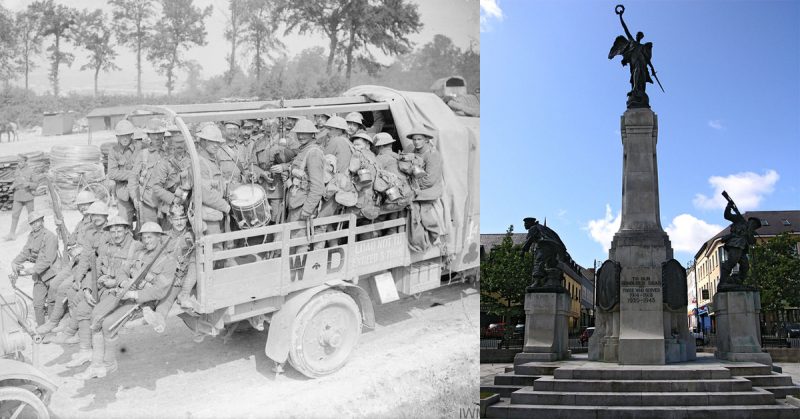Barney Donaghey was one of the most recognized names on the list of casualties from the Battle of Somme. Recognized by many Irish news readers as a former member of Manchester United, Burnley, and several Irish clubs, Donaghey fell during the bloody clash back in 1916. Donaghey started his career in 1900 at just 17 years old. Signing from his hometown club Derry Celtic, he made in immediate impression on the field. Standing only 5’4″ and weighing just ten stone, Donaghey made up for his small size with finesse and skill.
He was named Bernard after being born at Walker’s Place on 23 December 1882 but was known as Barney for the majority of his life. He quickly rose as a fan favorite after his debut for Derry Celtic in September 1900. Shortly after that, in 1902, he was chosen for the Irish League XI before moving to the starting lineup on Belfast Celtic. In the summer of 1902, he made his international debut for Ireland against Scotland.
In August 1902, he was chosen to play for Ireland, making his international debut in Belfast against Scotland. After a brief stint in Edinburgh, Donaghey came back to play for Derry Celtic. After catching the eye of Manchester United, however, he signed on for a fee of £100. Unfortunately, Donaghey had trouble holding down a starting position on the Manchester United team and was transferred back to his old club at the end of the season.
Continuing in his ever-changing career path, Donaghey again joined the top tier of football clubs and moved to Burnley. He started off playing for the reserves and after some solid play, he garnered the attention of the press. This was short-lived, though, and he eventually returned to his home club, Derry Celtic, for his third and final spell with the team. Donaghey enjoyed a successful career there and wore Derry Celtic colors for almost six years.
When the war broke out, however, he volunteered for service and entered the 1st Battalion of the Royal Inniskilling Fusiliers. In January 1915, the 29th Division assumed control of his battalion. In March, his unit traveled to Egypt en route to Gallipoli to participate in the Cape Helles landings, a deadly encounter for many Irish soldiers. Donaghey’s unit evacuated Gallipoli in January 1916, and Donaghey himself was taken to a hospital for treatment of head injuries incurred from contact with shrapnel. Donaghey wrote home throughout his recovery, telling the stories of his friends who had paid the ultimate price. Perhaps it was therapeutic to get what he was going through written down on paper.
As many soldiers do, he felt the remorse of losing friends but the relief of remaining alive. After Gallipoli, Donaghey’s unit was moved to France in March of 1916, where they would join the forces preparing for the Somme offensive. Donaghey, recovered from his wounds, was with his fellow soldiers for July 1st, 1916, the beginning of the Battle of the Somme. Donaghey and the rest of his unit were charged with the task of capturing Y Ravine.
This battle, however, proved to be one of the bloodiest of the war, claiming Donaghey’s life in a matter of hours. It took days for word to reach his wife, and unfortunately, his body was never recovered. His name, though, is etched on the Memorial to the Missing in Theipval, France, and commemorated on the Diamond War Memorial in Derry, his home town. He will always be remembered for his prowess on the pitch and his loss in that dreadful battle.
